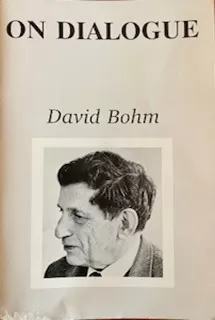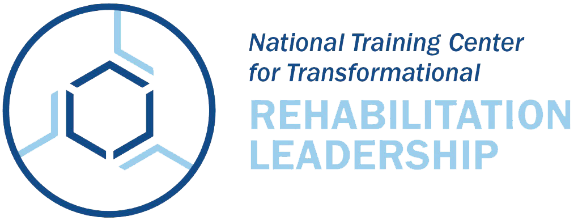June 2024 Newsletter
Posted:

Transformational Leaders Harness Communication "Superpower" to Unite Teams and Foster Innovation.
By Neil McNeil
If transformational leaders possess one essential “superpower” it is communication. Bringing teams together to share ideas, explore systemic problems, craft innovative solutions, and deepen an organization’s understanding of itself requires a special kind of communication.
Background
In 1994, I began my new job as a field office director in Quincy, Massachusetts. I was anxious about taking on this leadership role despite over twenty years of experience in vocational rehabilitation, much of that as a supervisor. Attending a leadership development program for new and aspiring vocational rehabilitation leaders at the University of New Hampshire (in collaboration with Assumption University) gave me my first exposure to the concepts of systems thinking and Peter Senge’s classic work: The Fifth Discipline: The Art & Practice of the Learning Organization. The ideas presented in this classic leadership book (which are also featured in our own Transformational Rehabilitation Leadership Training) helped me to see how organizations can change for the better and how teams can create the future they desire.
Senge and his colleagues were on the faculty (and still are) at MIT’s Sloan School of Management in Cambridge, Massachusetts. In 1997, Senge founded the Society for Organizational Learning. Soon after, they began to host annual Systems Thinking in Action conferences. In 1999, this conference was scheduled to be held in Atlanta, Georgia and featured Senge, his Sloan School colleagues and systems thinking projects from around the world.
I had a strong desire to attend this event, so I emailed our agency’s Commissioner and requested approval to attend. The Society for Organizational Learning was seeking candidates for “conference assistants” to help set up meetings, introduce speakers, and more. I applied and was selected. As a result, I was able to attend the conference at no cost... Attending that conference not only reduced my anxiety as a new leader but provided me with ideas, tools, and motivation to try and create the kind of culture that supported our very best work as vocational rehabilitation professionals. The experience helped me describe our vision of what an outstanding vocational rehabilitation office could become.
William Isaacs, author of Dialogue and the Art of Thinking Together, was a keynote speaker at the conference. Isaacs, a colleague of Peter Senge at MIT’s Sloan School presented a model of communication that allows groups of people to achieve a kind of shared meaning and common understanding that in turn eases the way for creativity and innovation. Before I explain his model, I would like to discuss David Bohm, whose earlier work inspired Isaacs, Senge, and other members of the systems thinking world.
When you seek knowledge about new and better ways of communicating among human beings, you might consider exploring the research and theories of social psychologists, sociologists, and even philosophers. But David Bohm was none of these. Dr. Bohm was a theoretical physicist who earned a PhD at Berkeley under the tutelage of Robert Oppenheimer. Bohm had a deep interest in the nature of human thought. He wondered if the conflicts that plagued societies around the world were caused by the inability of people to reach a state of shared meaning. He summarized his ideas in a forty-one-page monograph that was published in 1990 entitled On Dialogue. I have read and re-read this work many times over the past twenty years. I consider it one of the clearest descriptions of a communication model and tool that can help leaders achieve transformational change.
Bohm believed that our unconscious assumptions and beliefs about any topic, subject, or issue inhibited a group or team from effectively solving problems within systems or creating innovation and change. This dynamic resulted in people defending their opinions and positions rather than “thinking together” to produce a kind of shared meaning. Here is a quote from “On Dialogue”:
“We have been saying that people in any group will bring to it their assumptions, and as the group continues meeting, those assumptions will come up. Then what is called for is to suspend those assumptions, so that you neither carry them out nor suppress them. You don’t believe them, nor do you disbelieve them; you don’t judge them as good or bad. You simply see what they mean—not only your own but other people’s as well. We are not trying to change anybody’s opinion. When this meeting is over, somebody may or may not change his opinion.
This is part of what I consider dialogue—for people to realize what is on each other’s minds without coming to any conclusions or judgments. In dialogue, we have to sort of weigh the question a little, ponder it a little, feel it out.”
At the Systems Thinking in Action conference, William Isaacs brought Bohm’s work into sharp focus. He demonstrated graphically how dialogue might look and feel and how this way of communicating could help teams be more effective. He did this by comparing “dialogue” with “discussion”.
When groups of people come together to solve a problem, make change, or explore ideas, the conversation usually takes the form of a discussion. As people begin deliberation, they start defending their positions(based upon Bohm’s ideas about conscious and unconscious assumptions. When this happens, the group ends up in a kind of controlled discussion or even worse, a debate mode. Members are simply attempting to “win” their points and defeat others’ ideas. Decisions are often imposed by the victors. We have all been in these kinds of meetings.
The alternative, as Isaacs describes, is to suspend one’s assumptions and listen deeply while moving toward exploration of underlying causes and surfacing important questions. By doing this, the group develops the ability to develop new insights and ideas that come forth by thinking together. He calls this generative dialogue. The graphic shows the outcomes of key choice points when groups or teams meet.
Dialogue is an important tool for leaders pursuing cultural change that is truly transformational. Lesson 4 in the Cultural Change section of our course is especially relevant here.Isaacs book goes on in detail about developing the skills and conditions needed to practice dialogue in organizations. At the systems thinking conference, I participated in several dialogue groups that Issacs led. I used these dialogue sessions with our field office staff for several years as we grappled with systems problems that required our best thinking.
This featured article was contributed by Neil McNeil a Senior Program and Policy Specialist at the Institute for Community Inclusion University of Massachusetts Boston and one of our esteemed mentors for the Certified Rehabilitation Leader training program.
EVENTS
August Cohort
Due to high demand, we are excited to announce the opening of an August Cohort. Spots are limited, so secure your now be beginning the registration process HERE. If you have any questions, don't hesitate to reach out to Russ at russell.thelin@umb.edu or Erin at nierenhausene@uwstout.edu. We're here to assist you every step of the way.
Upcoming All-CRL Roundtable
Mark your calendars and join us on October 8 from 12:00 pm - 1:30 pm, Eastern Time, for our All-CRL Roundtable call. An opportunity to gather virtually to exchange ideas, share experiences, and foster connections within our vibrant community. Register coming soon!
UNLOCK YOUR LEADERSHIP POTENTIAL
Are you ready to take your leadership skills to the next level? Elevate your career, inspire your team, and make a lasting impact today.
Learn more and enroll today.
BOOK CORNER
On Dialogue 2nd Edition
In "On Dialogue," David Bohm explores the profound potential of dialogue as a tool for understanding and transforming human thought and communication. This second edition delves into the mechanics of creative dialogue - a sharing of assumptions and understandings — as a crucial method for individuals and society to learn more about themselves and each other, leading to a renewed sense of purpose.
Send this blog post to someone:
SUBMIT
